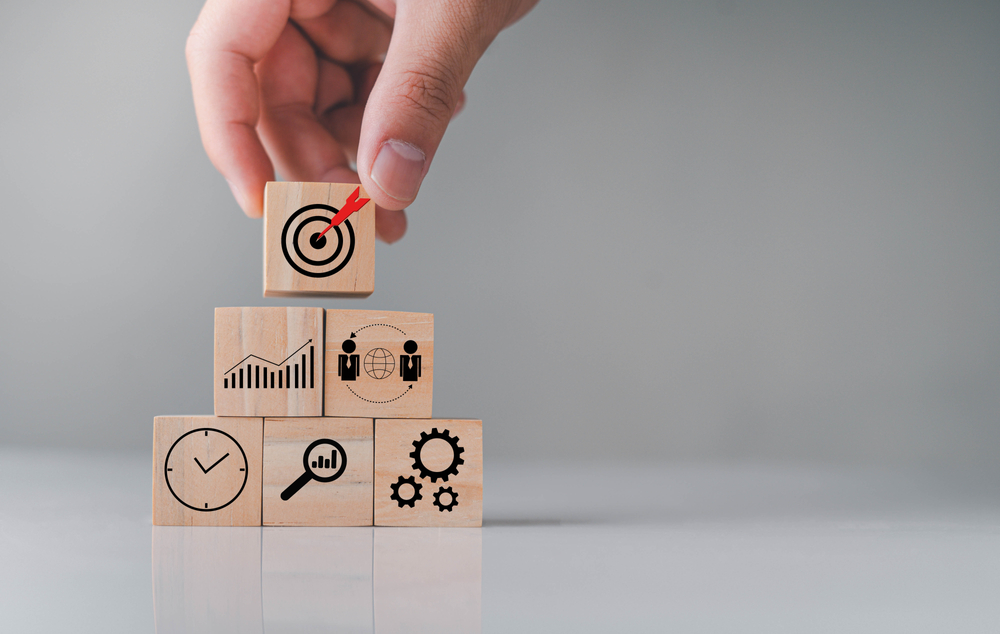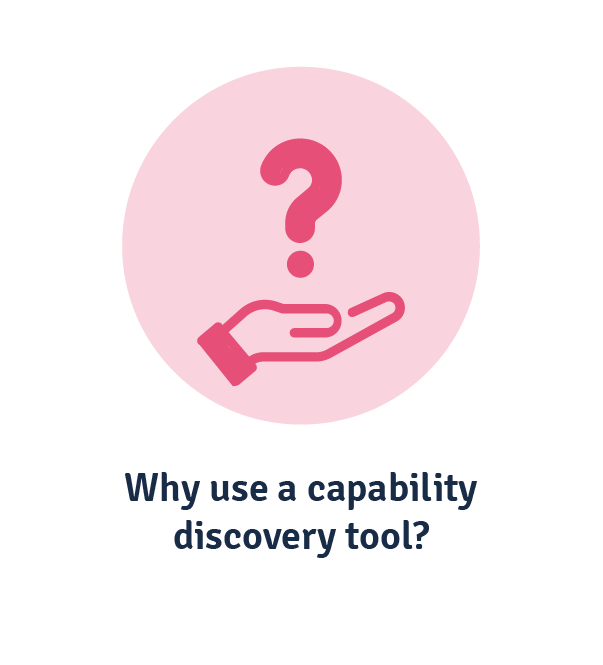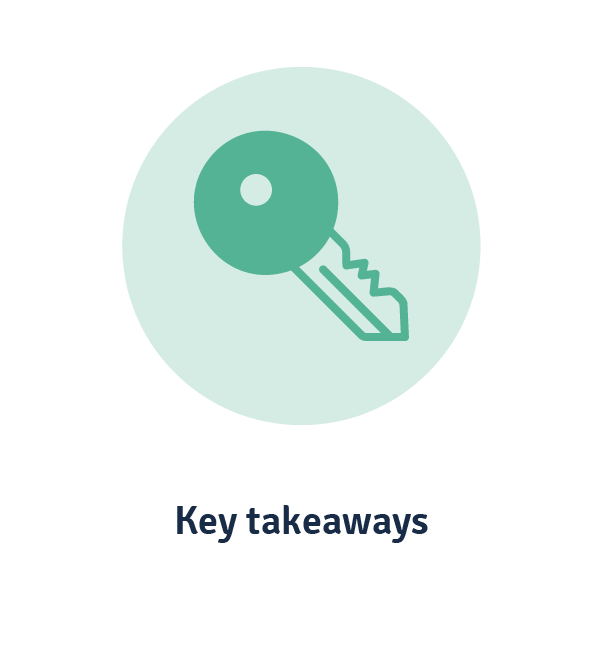How to Use a Capability Discovery Tool for Organisational Capability Building
Capability assessment should be a continuous process to ensure your framework and capabilities are optimally used and understood. But how can you assess both organisational maturity and employee application of capabilities? A capability discovery tool.
A capability discovery tool can be many things: A platform to glean institutional data, a tool for employees to self-assess capabilities, a pool of information to support digital learning strategies—the list (and business benefits) goes on.
It’s also fairly simple to use, if you know how to get the most of out it. We’ll walk you through why you should be using a capability discovery tool and how to ensure workforce adoption of one in this guide.
What is a capability discovery tool?
Capability discovery is a process to ensure that capabilities are mapped to the right job roles, job families and business functions.
A capability discovery tool assesses the capabilities an employee possesses against a defined capability framework. It helps:
- Employees self-evaluate their development needs
- Managers assess the talent needs of their teams
- HR, L&D and organisational development professionals better align workforce planning with business needs.
How does a capability discovery tool work?
Through a website or platform, employees or managers answer questions about their own or team member’s individual performance.
Users will typically select a certain number of capabilities to assess out of an entire suite of organisational capabilities. This is typically done to support a specific development track, such as assessing the digital capabilities of an emerging leader.
At the end, a personal report is created. Depending on your organisation’s intent for the tool, these reports will provide an overview of the individual’s competency levels across a number of chosen capabilities. Many organisations offer free resources with suggested next steps for development, too.
From there, capability discovery should serve as the basis for learning and development. Most legacy learning management systems will focus on skills, which is why we founded the performance learning management system (PLMS) on capabilities. You can complete capability discovery and assessments within Acorn PLMS, as well as map content to specific capabilities. It’s the only way you can guide learners step-by-step to master the capabilities of their role, for maximum organisational impact.
Why use a capability discovery tool?
Capabilities, as we’ve said before, are rather static on their own. That’s because they remain the what of your organisation, not the how. The how comes from the ways in which you utilise them.
A digital discovery tool is just one way to make capabilities more accessible and widely adopted in your organisation.
It has two complementary functions.
- It enables employees to self-assess their current capabilities and competency levels against your organisation’s standards.
- It offers business leaders and decision makers insight into the accuracy, maturity and availability of organisational capabilities, optimising prioritisation.
Without assessment, capabilities stagnate, which can have any of the following effects.
- Under-utilisation of business drivers
- Poor or lack of adequate resources
- Minimal value creation
- Lack of innovation in value streams
- Lack of role clarity or self-awareness in employees
- Poor or misinformed forecasting.
How to implement a capability discovery tool
Before you dive into a tool, you’ll need a capability framework. It’s helpful if you’ve already got some kind of digital learning technology that supports your framework, but at the very least, you’ll want to have your framework already set up and digitised.
The first step in implementing a discovery tool is to understand why you’re using one.
Tie to strategy
As with any business processes, a capability discovery tool should be tied to organisational strategy (and L&D and workforce planning strategies by default). Essentially, you’re looking for a business impact to be felt from introducing the tool, like process improvement, better data or clearer visibility of capabilities for employees.
Consider then:
- How you assess and prioritise capabilities currently, including strengths and weaknesses
- The anticipated benefits of using the tool and how those are communicated
- Who will use the data collected and what for
- Any special initiatives to give additional context for a discovery tool, such as the implementation of a digital capability framework.
Also consider who is responsible for your capability discovery tool. They’ll have to provide relevant resources and design messaging for stakeholders.
- For users, it can be framed as a developmental tool using self-assessment.
- For managers, a way to assess users’ confidence in their own abilities and understand the maturity of their team’s capabilities.
- For organisations, a data source to better invest in strategic L&D. However, you’ll need to ensure you can aggregate anonymous data.
Design assessment
All discovery tools utilise reflective questions and statements not unlike those you may use for performance or competency management. That gives you two options when designing the major assessment portion within your tool.
- You can pull from existing performance indicators in your capability framework.
- You can create scenario-based questions that exemplify capability application.
If you choose the latter, remember that these statements or questions need to be easily understood. Don’t write paragraph-long examples of capabilities in action.
Most tools will enable you to assess capabilities at different levels of competency. That is, say you’ve got the sub-capability of Manage self with five standards for performance like foundational, intermediate, adept, advanced and strategic. You can segment assessment of that capability by competency, so that an employee may choose to evaluate their grasp of Manage self at an intermediate level.
From there, you pull out the performance indicators for each level of competency (see option 1 for assessment). These are the statements (or questions) you’re asking employees to assess.
The metrics for that assessment depends on your needs, but you may use a scale such as needs development, meets expectations and exceeds expectations.

Provide support
When assessment is said and done, there should be clear courses of action for employees or managers.
Ergo, the report they get at the end of assessment should also offer insight into development actions they can take to bridge gaps.
The NSW Public Sector’s discovery tool provides suggestions for development under each performance indicator assessed. Let’s go back to that example with the capability manage self. Where a self-assessment shows that an employee only meets expectations for, the generated report offers the following advice.

Some additional resources you can offer include guides on how to:
- Use a personal report in promotional and appraisal meetings
- Align job design with capability profiles
- Support succession plans with capability assessments
- Create personalised capability development plans based on results.
Key takeaways
Amongst your suite of strategic business tools, a capability discovery tool is one that:
- Helps better engage your workforce with capability plans
- Provides insight into capability gaps and development needs
- Enables greater visibility of organisational capability maturity.
It shouldn’t be implemented without thought. Whether you’re using it support a specific initiative (like developing digital capability) or simply gain more clarity on capabilities across your workforce, ensure that assessment results will have an impact. Think process improvement for your HR, L&D and organisational development teams or autonomy and ownership of career progression for employees.
Related Reads on This Topic

The How-To Guide to Effective Capability Assessment
Read more to discover how capability assessments measure the capabilities of both your business and individual employees…

Capabilities vs Skills: What Exactly Makes Them Different?
Skills refer to the capacity to perform a task, whilst capabilities allow outcomes to be generated. Discover more about their differences…

How to Measure (and Decrease) Time to Proficiency in the Workplace
Learn how to measure time to proficiency and what strategies will decrease employee ramp time in the workplace…



